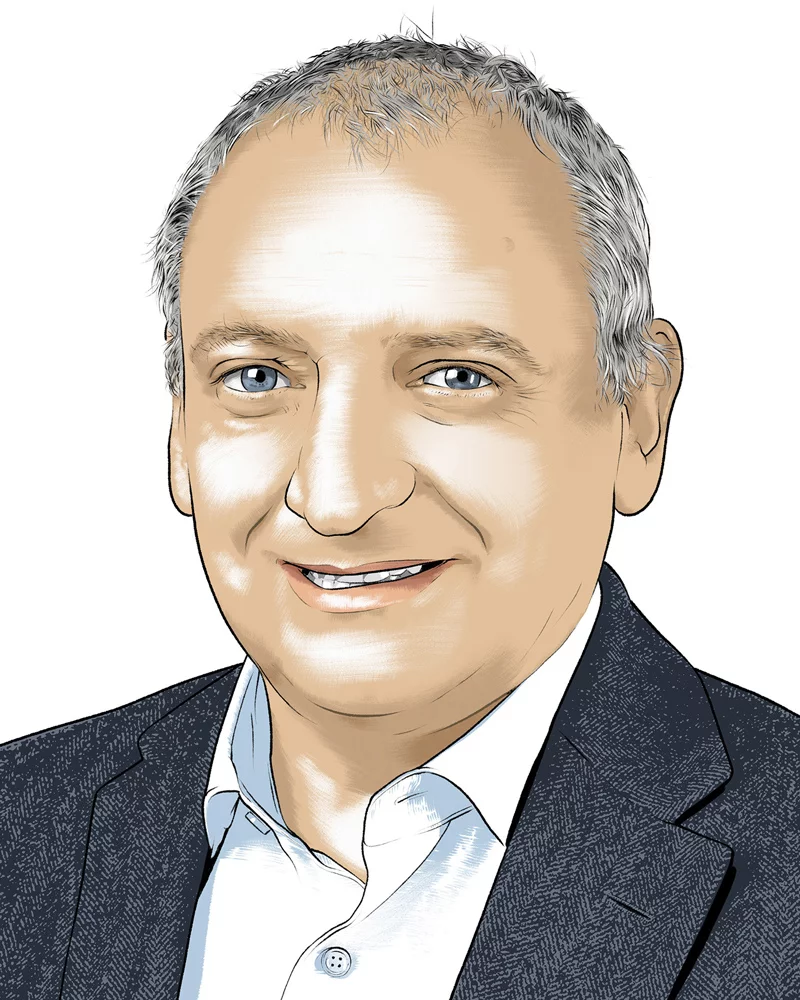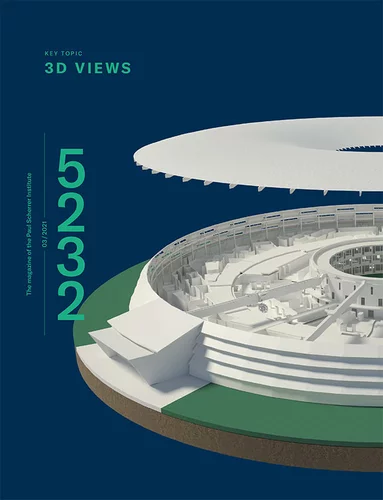Mike Seidel is head of the Large Research Facilities Division at PSI. He knows each of the five facilities inside and out, especially the associated particle accelerators.
Mr. Seidel, you originally studied nuclear physics, but PSI shut down its only research reactor in 2012. So what are you doing here?
Mike Seidel: Nuclear energy is just one application of nuclear physics. There it's all about atomic nuclei, which are made up of neutrons and protons. To do nuclear physics or particle physics, you need particle accelerators, and that is how I came to accelerator physics. My division is responsible for operating and developing the various accelerators at PSI.
Does each of the five large research facilities at PSI have its own particle accelerator?
With regard to SLS and SwissFEL, each has its own dedicated accelerator. SLS is a synchrotron, meaning it has a ring-shaped accelerator that boosts electrons up to nearly the speed of light; these in turn emit X-ray light, which is used for a wide range of investigations at the different experiment stations. At SwissFEL, too, electrons are accelerated for the same purpose, but on a straight stretch with a linear accelerator, linac for short. And then we have another facility at PSI called HIPA. That stands for high-intensity proton accelerator. Here protons are accelerated in a cyclotron. These are then used to selectively generate neutrons and muons for the large research facilities SINQ, SµS, and CHRISP. Our division looks after these three large accelerator facilities, which are coupled to the five large research facilities. In addition, there is the PROSCAN facility, which provides proton beams for cancer therapy.
And each of these three large accelerators is unique in the world?
Yes, each of them is one of a kind. What is really unusual, though, is that we have both electron and proton facilities at PSI. Many institutes around the world concentrate on one type of accelerator. Electrons and protons behave very differently in accelerators. This stems from the fact that protons are two-thousand times heavier than electrons. In contrast to electrons, they emit hardly any synchrotron radiation. In practice, one consequence is that the magnets of HIPA are significantly larger than those of SLS or SwissFEL. On the other hand, the vacuum required by SLS is around a thousand times better than that of HIPA.
Isn't it difficult to operate such completely different facilities in one place?
The requirements are different, but there are a lot of fundamental similarities in the technology. Throughout, we use magnets to guide the particles and high-frequency systems to accelerate them. Likewise, at all of the facilities we need vacuum technology and control systems, as well as computational capabilities to model the behaviour of the accelerated particles.
Does this give rise to advantages as well?
Yes, we create synergies. We have a higher-level section devoted to vacuum technology. And a magnets section that can deal with magnets as small as the palm of your hand or as big as an elephant, and anything in between. One common control room serves all of the accelerators. There it is routine for operations to be largely automated. For optimisation, however, the operators need to have enormous and detailed knowledge, for example to determine the source of a problem and to help get the facility running again.
So the work in your division isn't monotonous?
I don't think so. We are the only national institute in Switzerland with such facilities, and we make them available to researchers nationwide and also internationally. It's a constant challenge for us to continuously improve this complex operation and to expand the possibilities for new applications. There are always new experiments that really can only be carried out here, and that never loses its appeal.


